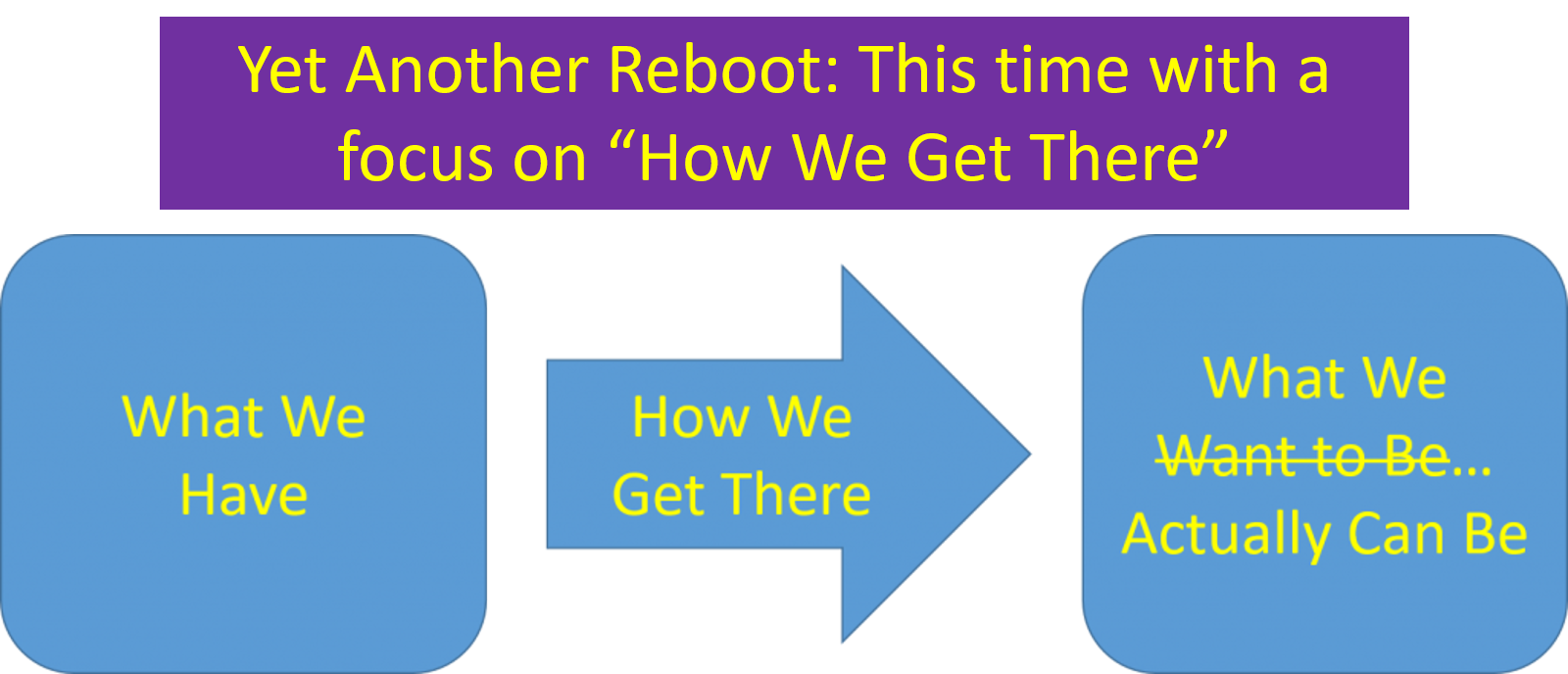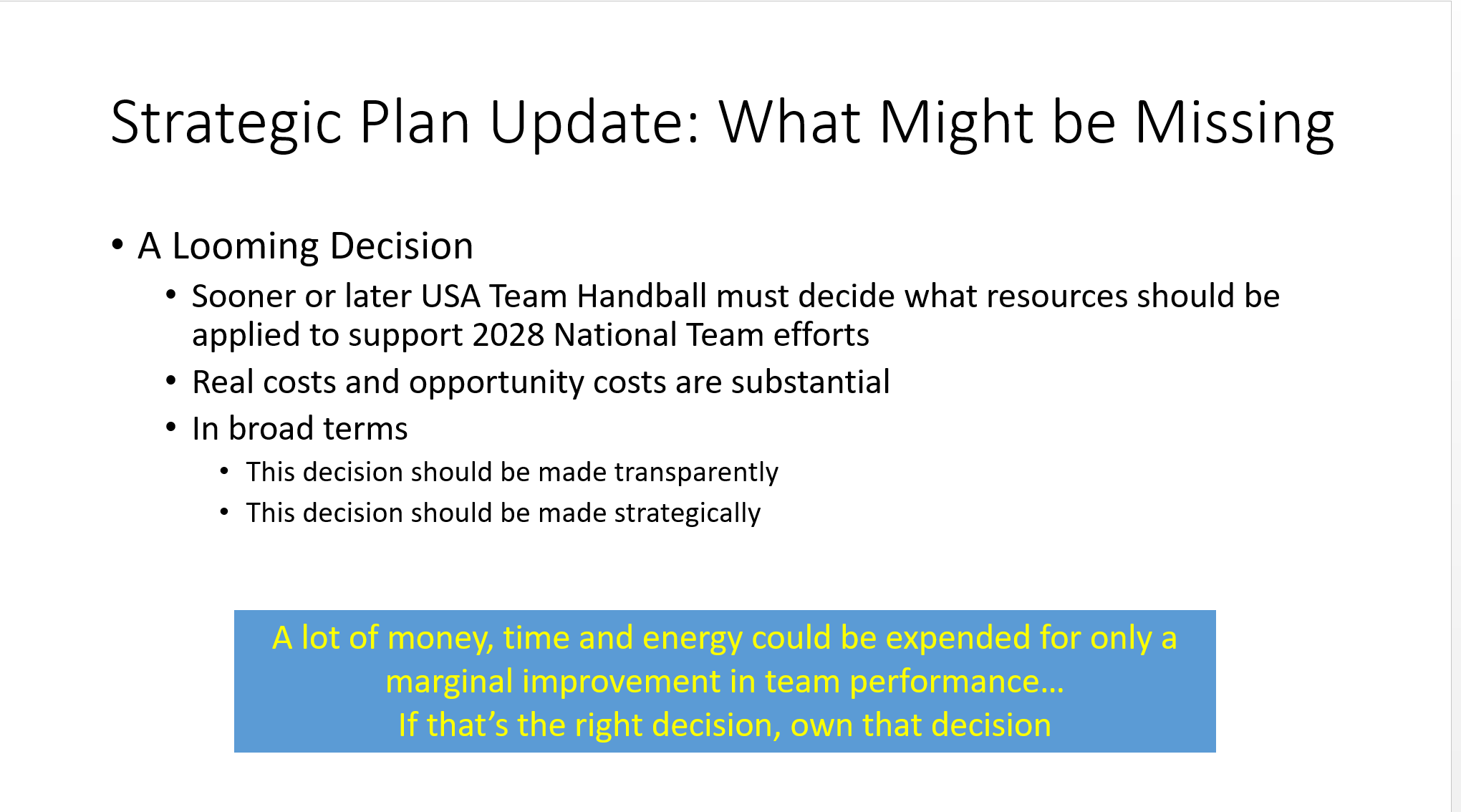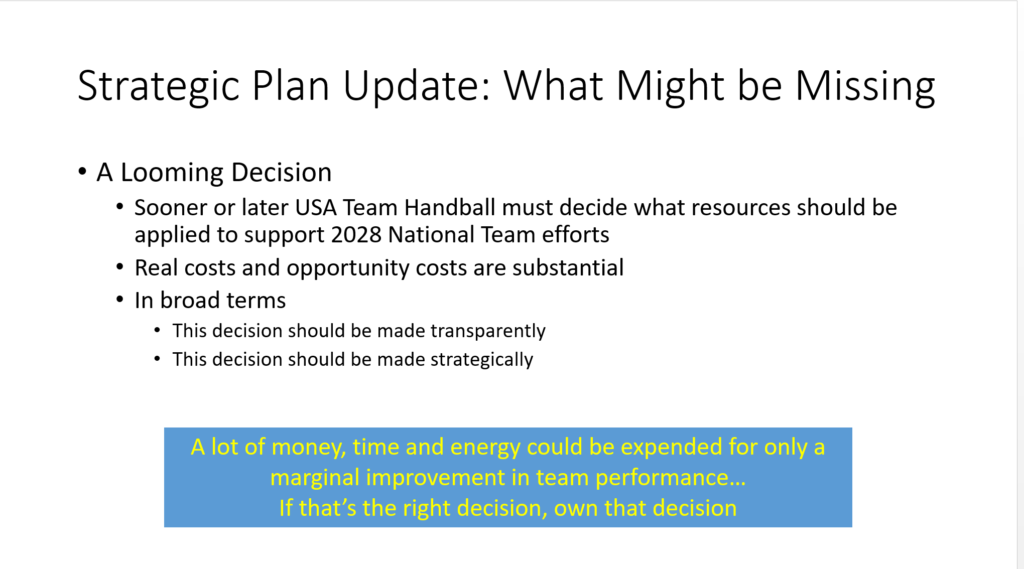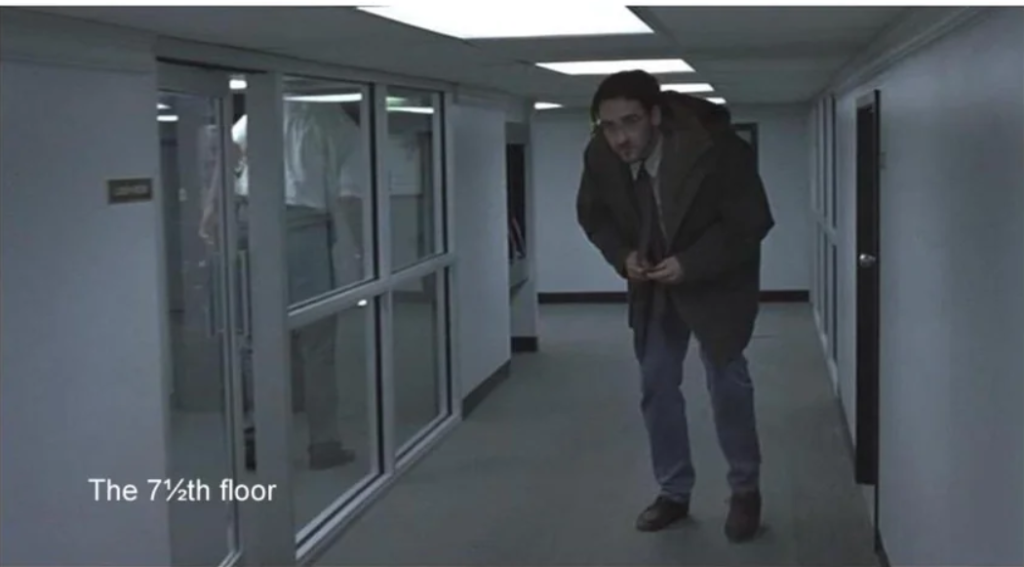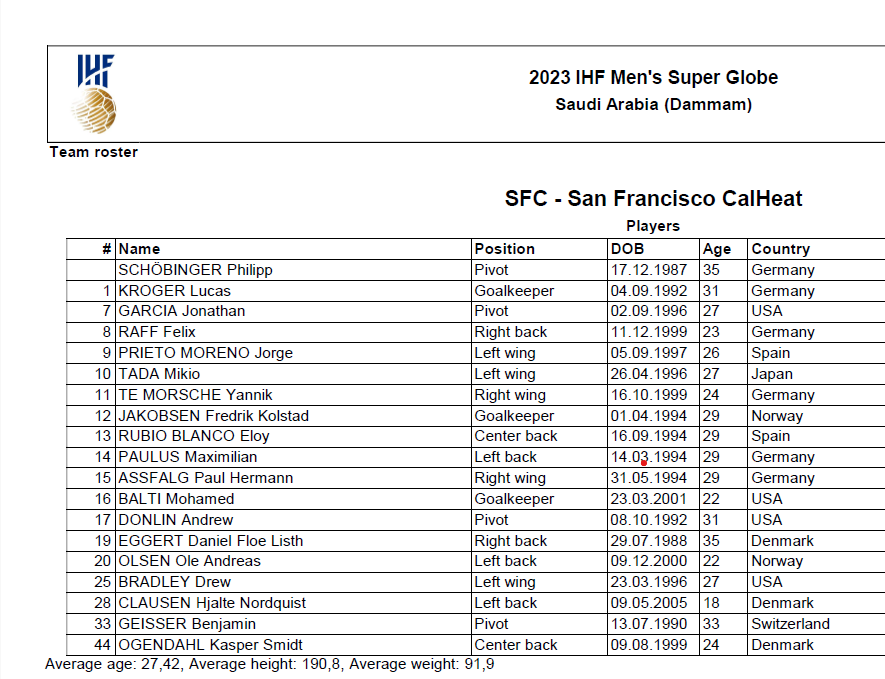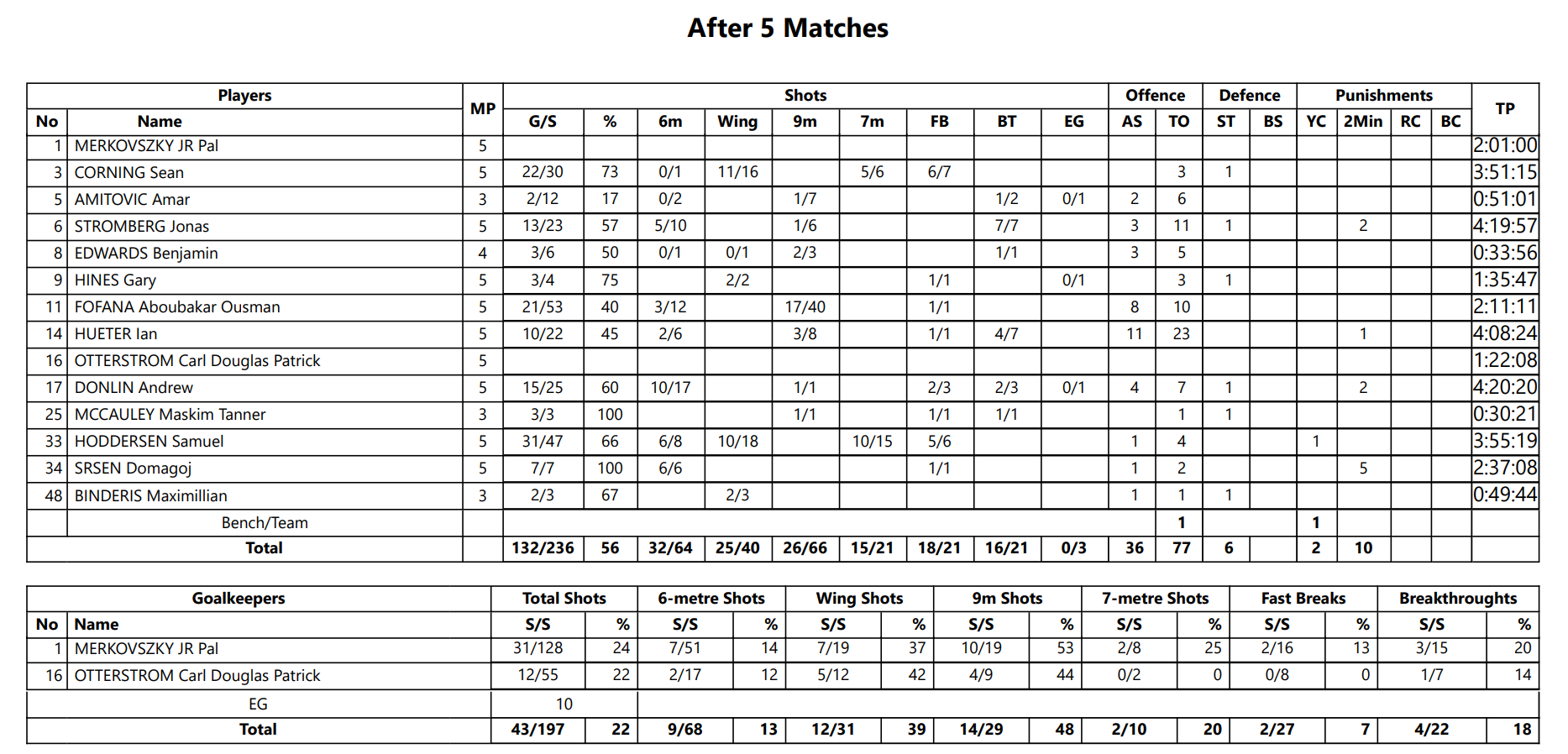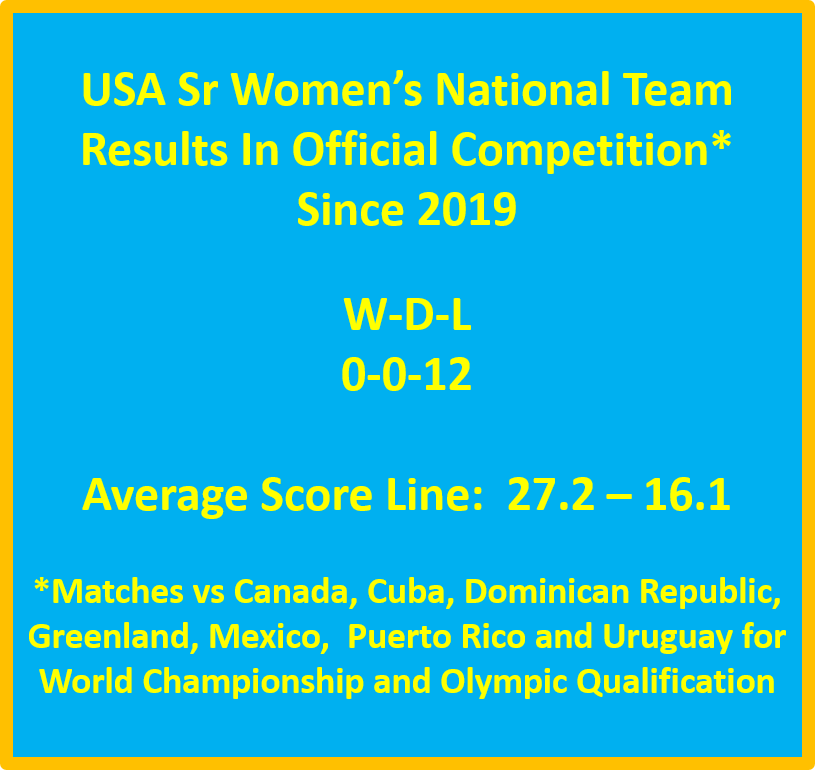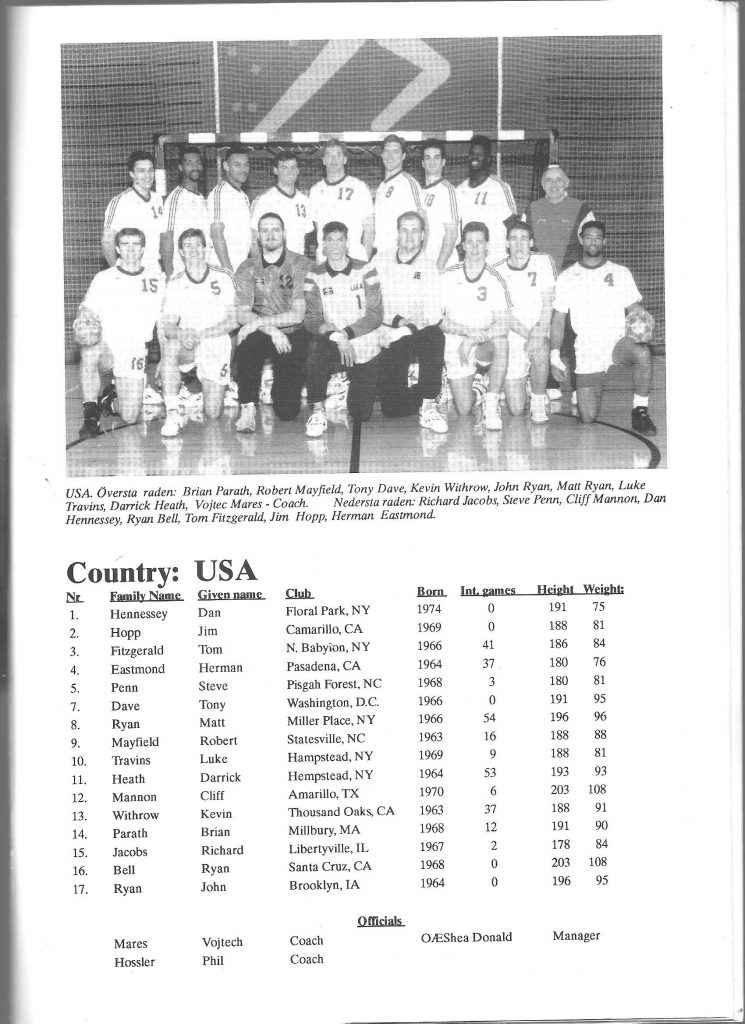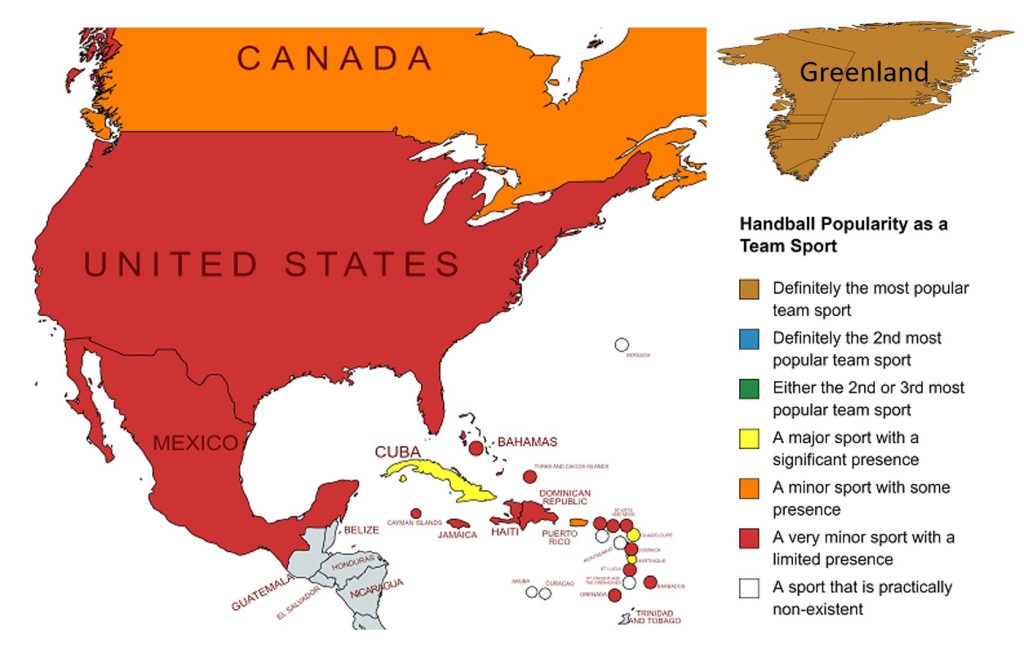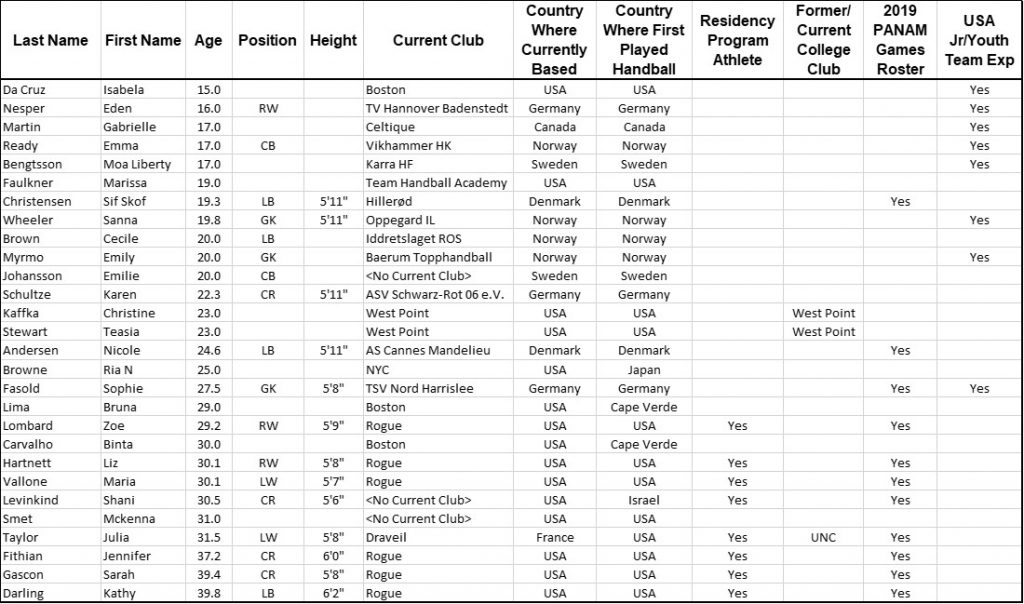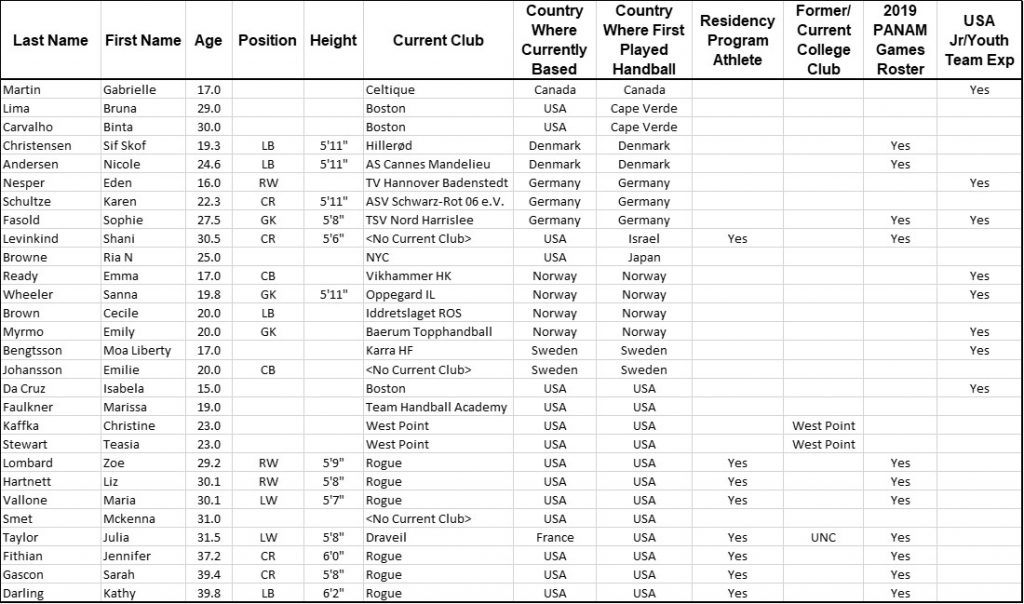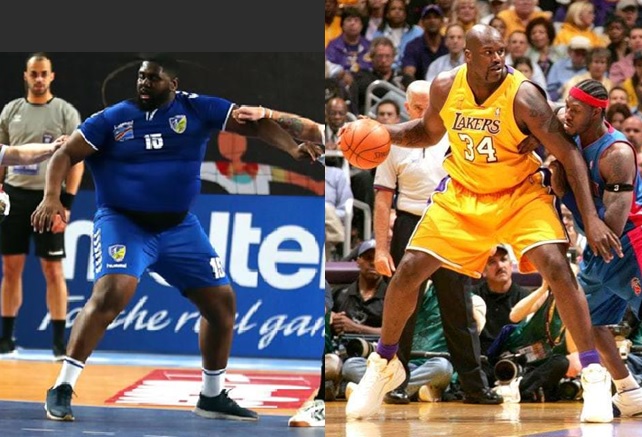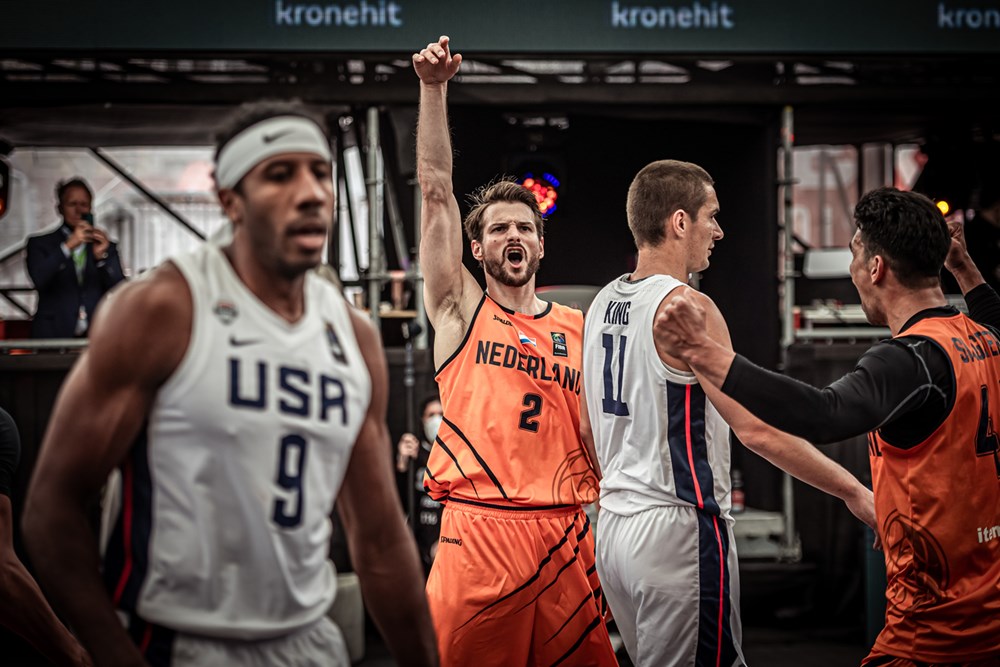Team Handball is a great sport and virtually everyone introduced to the sport has wondered why this most American of sports hasn’t caught on in the U.S. As someone who has followed handball development (or the lack thereof) in the U.S. for over 35 years I have been continuously frustrated with the overall lack of planning to move the sport forward. Our small community is very committed and has been willing to work hard, but without a plan… we’ve mostly been spinning our wheels in place or worse, regressing backwards as other niche sports have passed us by.
Retrospective
While I’ve been having the typical after match, barstool discussions on these topics since the late 1980s I didn’t start to document those opinions until I started this website. In 2014, I first systematically addressed planning with the identification of several alternative initiatives for consideration. These options included strategies for improving out national teams, placing more emphasis on collegiate handball, on women’s handball and the adopting a regional (instead of nationwide) development strategy. Links to these initiatives and others from the original series are at the end of this post.
In 2018, USA Team Handball developed and approved a Strategic Plan. While not a perfect document the organization now had a documented starting point to guide efforts to move the sport forward in this country. In 2019, with new leadership in place I took the opportunity to reboot the original series and to first assess where USA Handball stood as an organization and how that might fit in with the goals and objectives of the strategic plan.

I covered what “What We Have” and “What We Want to Be” pretty thoroughly and those links are at the end of this post in the First Reboot (2019) section. Surprisingly… or not surprisingly the What We Have section is still pretty accurate 5 years later.
The New Reboot
The 2019 Reboot ended, however, with my just barely having started the hard task of assessing “How We Get There” and the necessary changing of “What We Want to Be” to “What We Actually Can Be.” This incomplete effort was partly due to the COVID Pandemic and partly due to my actually working for USA Team Handball for a brief time.
Now in 2024, with the COVID pandemic clearly behind us and Olympic qualification guaranteed for 2028 it’s high time to move forward. The next four years present a lot of challenges, but also a lot of opportunities the sport in this country has not had since the 1990s. Honestly, the opportunities are so great we could basically muddle through the next four years haphazardly and still make progress. We could… but, we don’t do that. Instead we need to maximize these four years as much as possible with a constant eye towards actions and initiatives that can help lead to sustainable growth after 2028.
Bottom Lines… Up Front
While I generally prefer a methodical process without pre-ordained answers there’s not a whole lot of time to waste. Honestly, this sort of effort should have started in the midst of the pandemic when all we could do was plan for the future. That said, I’m alreadly leaning towards several bottom lines that could inform a Strategic Plan update as well as follow on actions that should be implemented. I’ve even already written some commentaries addressing one of the topics. Here are some bottom lines… up front:
- National Teams
- The U.S. Men’s Sr national team is already sufficiently competitive for the upcoming 2028 Olympic Games. The team should continue to be supported at roughly the same level
- The U.S. Women’s Sr national team is currently not on a path to be sufficiently competitive at the 2028 Olympics. A plan to effectively broaden the existing talent pool and train newcomers should be developed and implemented as soon as possible.
- The level of support to Jr and Youth national team competitions and training should be reassessed based on our expected Return on Investment (ROI)
- Domestic Competitions
- Collegiate handball is the “sweet spot” for development in the U.S. The bulk of available resources should primarily be focused on establishing/sustaining new collegiate clubs, improving the overall level of play, and promoting collegiate handball
- Support to adult, recreational handball competitions should be limited to basic organizational support. These competitions, while important to existing members have very limited prospects for growth and/or promotional benefit,
- Support to any professional league efforts should not be provided or encouraged. The current sporting landscape in the U.S. makes it all but certain that such an effort will be unsuccessful.
- Support to youth, recreational activities should be focused towards the establishment of sustainable local competitions or some other follow on target.
- Marketing and Promotional Activities
- Team Handball currently has a very small footprint with major sports entities with a linear TV, streaming and social media presence. A plan should be developed and significant resources should be applied to improving this footprint for international national team, professional and collegiate competitions
- Based on the current TV landscape a strong case can be made for a documentary/reality show focused on the development of the U.S. Women’s National Team. A plan should be developed and significant resources should be applied towards making this happen.
- Fundraising/Revenue Generation
- Sponsorship opportunities should increase as we approach the 2028 Olympics. A plan should be developed to maximize those opportunities. This may or may not necessitate a contractual arrangement with an agency.
- Membership dues provide other sport NGBs with a significant portion of their overal revenue. USA Team Handball should fully assess whether that model can also apply for handball and, if so, develop a plan to facilitate membership growth.
- Beach Handball
- As long as beach handball is not on a path for inclusion in the Olympic Games, resources applied to support beach handball should be minimized. This is because there are simply not enough resources and manpower to be applied towards one discipline… let alone two disciplines.
I’ll be putting some more “meat on the bones” on these bottom lines and you can already see two posts that I’ve written on the challenges facing the U.S. Women below
Picking Winners and Losers
It goes without saying that these proposed bottom lines are going to make some people unhappy. The good news for everyone is that I’m just some guy with a website. I’ve got some influence, but the reality is that this is a Board Member/CEO driven process. The bad news is that these things take time and USA Team Handball has historically been a risk averse, keep as many people happy as possible organization. One that has often avoided picking winners and losers. And, the really bad news is that indecision is essentially just a decsion to maintain the status quo.
I’ll go on record that my intent here is to hopefully be read and to stir discussion towards decision making. Preferably, adopting what I’m proposing, but I’ll take actually making a decision as a little victory too. Because, the reality is that there isn’t always one clearly right answer, but multiple possibilities to choose from… Pick one and move out.
Subject to Revision
I’ll also go on record that I’m more than open to having my mind changed. To be introduced to new data that makes me rethink my bottom lines. One thing that I’ve learned is that when one starts to go beyond yakking over a beer and puts their thoughts down on paper… what was once certain can become a bit fuzzy. Can even lead to a full 180 degrees change of view. That’s happened more than once and that’s a good thing. We’ll be discussing many of these topics in upcoming podcasts, sometimes with guests that are sure to have contrary views. So don’t be surprised if over time this post get revised.
Yet Another Reboot (2024)
- U.S. Women’s National Team (What’s Next?)
The Original Series (2014)
In 2014, I wrote several commentaries on the newly implemented Residency Program at Auburn. Over and over I hammered away with all the concerns I had with this well intentioned, but poorly conceived effort. After some reflection, though, I thought it would make sense to identify some alternative strategies. Here are some links to the commentaries from that series… and some missing links as I never finished this effort:
- Introduction: Many Options + Limited Resources = Hard Choices: Link
- 1) Modify the National Team Residency Programs to focus strictly on player development: Link
- 2) Increase the emphasis and support to National Team recruiting: Link
- 3) Develop or participate in a European based residency program to provide athletes more competition: Link
- 4) Upgrade College Team Handball: Following the rugby club model to nationwide participation (Part 1; Part 2)
- 5) Upgrade College Team Handball: Seeking NCAA status on the heels of the O’Bannon Ruling
- 6) The “Title IX Field Hockey Strategy”: Focus 90% of USA Team Handball’s resources on Women’s Programs: Link
- 7) The “Iceland Strategy”: Focus a large percentage of USA Team Handball’s resources on one geographical location (Part 1; Part 2; Part 3)
- 8) The “Alberta Strategy”: Fully assess Alberta’s successful development program and fund a U.S. version in one region of the U.S.: Link
- 9) Youth and Junior Teams Emphasis: Fund U.S. participation for up and coming athletes first
- 10) Funding direct to clubs: Reward high performing club programs with real and tangible financial support
- 11) High School Team Handball: Following in Lacrosse and Flag Football’s footsteps
- 12) True Youth Movement: Follow the AYSO soccer model to develop a massive player and fan base at even younger ages
- 13) U.S. Olympic Handball Festivals: Bridging the gap between club and national teams
The First Reboot (2019)
Introduction: Link
What We Have
- Demographics (Men)
- Demographics (Women)
- USA Club Programs
- Part 1: Understanding the USA Club Structure and At-Large Men’s Clubs: Link
Part 2: Collegiate Men’s Clubs: Our Most American Competition with Opportunities for Growth: Link
Part 3: USA Women At-Large and Collegiate Clubs: Link
Part 4: Why there are so Few Clubs and Why the Rosters Mostly Consist of Expats: Link
- Part 1: Understanding the USA Club Structure and At-Large Men’s Clubs: Link
- Finances
What We Want to Be
- Part 1: A review of the USA Team Handball Strategic Plan and National Team Targets: Link
- Part 2: A review of USA Collegiate Development Targets: Link
- Part 3: A review of Fundraising Targets: Link
- Part 4: A review of Marketing Targets: Link
- Part 5: A review of the “Big, Hairy, Audacious Project: Link
How We Get There
